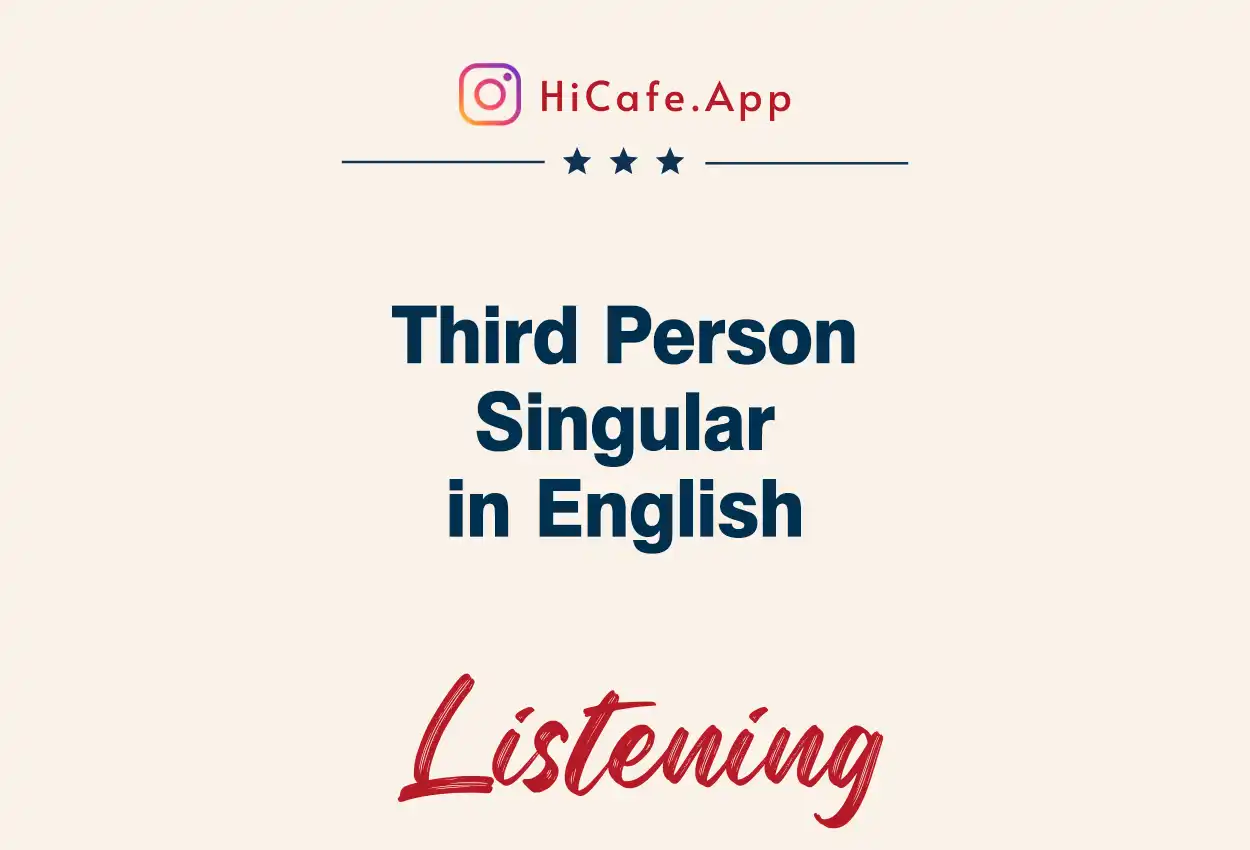
Beginner Listening Series 1 Lesson 12- Dialogue about Third Person Singular in English
In this lesson, you listen to an English dialogue about third person singular.
Previous Listening Lesson
TBD
English Listening Lesson Audio with Script
Lesson Audio
Lesson Script
Conversation 1
Man: What does Bob do?
Woman: He works at a hospital.
Man: What does he do there?
Woman: He’s a doctor. He specializes in sports medicine.
Man: That sounds like a great job.
Woman: Yeah, he loves it.
Conversation 2
Man: Where does Mary live?
Woman: She lives in the countryside.
Man: That sounds nice.
Woman: Yeah, she loves it. She has a farm and she raises horses.
Man: Wow, that’s so cool.
Woman: Yeah, she also grows her own food. She has it all!
Conversation 3
Man: How does Sue stay so fit?
Woman: She works out all the time.
Man: It sure looks like it.
Woman: She also watches what she eats.
Man: Does she follow a special diet?
Woman: Yes, she doesn’t eat sweets and she doesn’t drink alcohol.
Conversation 4
Man: What does this machine do?
Woman: It shreds paper.
Man: How does it work?
Woman: Just put paper here and it shreds it. It’s easy to use.
Man: How does it stop?
Woman: It stops on its own after it finishes shredding the paper.
English Listening Lesson Quizzes
Answer these questions about the conversation.
1) Who works at a hospital?
a) Bob
b) Carl
2) Who has a farm?
a) Mary
b) Sue
3) Who stays in good shape?
a) Mary
b) Sue
4) What does the machine do?
a) Copy paper
b) Shred paper
Answers:
1=a
2=a
3=b
4=b
English Grammar Tips
Present Simple – Third Person Singular
Point 1: The third person singular refers to a person or thing you are talking about. Because it is singular, it refers to just one person or thing.
- Bob is my boss. He helps me a lot.
- Suzy has a nice car, but she never drives it to work.
- My phone does not take pictures. It does not have a camera.
- This pizza tastes great. It has a lot of calories, though.
Point 2: In the present tense, we add an /-s/ to verbs if the subject is the third person singular.
- Larry loves videos games. He plays them every night.
- Sue walks to work. She listens to podcasts as she walks.
- My phone needs a new charger. It costs 40 dollars.
Point 3: In negative statements, change do not to does not. In spoken English, we often say the contraction doesn’t.
- She does not work nights. => She doesn’t work nights.
- He does not travel much. => He doesn’t travel much.
- It does not snow much in my town. => It doesn’t snow much in my town.
Point 4: In questions, change the auxiliary do to does in WH questions if the question is about the object.
- When does the train leave? => It leaves at six.
- What does your mom want for her birthday? => She wants a cat.
- How does your wife get to work? => She takes the bus.
- Why does he always look angry? => He has a lot of stress.
Point 5: Add /-s/ to the verb, and do not use does if the question is about the subject. The question word will be either what or who.
- Who lives here? => My friend lives here.
- What costs a lot of money? => College costs a lot of money.
- Who talks to you every day? => My dad talks to me every day.
- What takes up a lot of your time? => Driving to work does.
Point 6: In Yes/No questions, change the auxiliary do to does in both the question and the short answer.
- Does he work here? => Yes, he does. / No, he doesn’t. (does not)
- Does she have a nice house? => Yes, she does. / No, she does not.
- Does it rain much in your town? => Yes, it does. / No, it does not.
English Listening Lesson Phrases
None
Quizzes for Lesson Phrases
None
Previous Listening Lesson
TBD
Related Listening Lessons
TBD
All Lessons for Learning English Listening
Visit our Improve English Listening Skills page to see all of HiCafe 300+ lessons for learning and improving your English listening skills.


